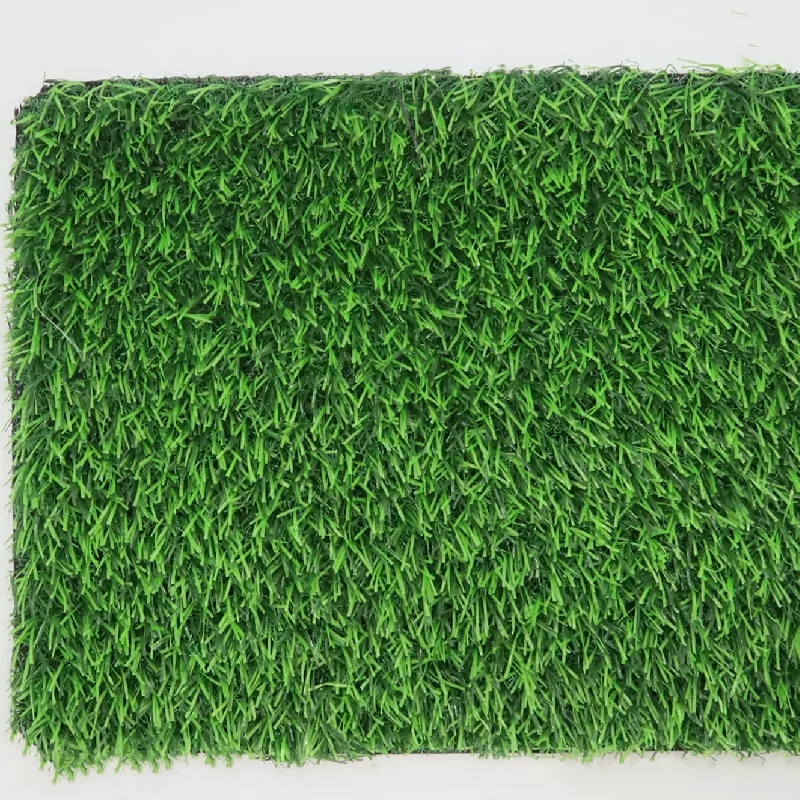
- Afrikaans
- Arabic
- Belarusian
- Bengali
- Czech
- Danish
- Dutch
- English
- Esperanto
- Estonian
- Finnish
- French
- German
- Greek
- Hindi
- Hungarian
- Icelandic
- Indonesian
- irish
- Italian
- Japanese
- kazakh
- Rwandese
- Korean
- Kyrgyz
- Lao
- Latin
- Latvian
- Malay
- Mongolian
- Myanmar
- Norwegian
- Persian
- Polish
- Portuguese
- Romanian
- Russian
- Serbian
- Spanish
- Swedish
- Tagalog
- Tajik
- Thai
- Turkish
- Turkmen
- Ukrainian
- Urdu
- Uighur
- Uzbek
- Vietnamese
Installing Artificial Grass in Compact Spaces for Enhanced Outdoor Aesthetics
Oct . 13, 2024 20:54 Back to list
Laying a Small Area of Artificial Grass A Step-by-Step Guide
The appeal of artificial grass has surged in recent years, and it's not hard to see why. Its low maintenance requirements, year-round lush appearance, and ability to withstand varying weather conditions make it an attractive option for small areas, whether it's a backyard, balcony, or front garden. If you're considering laying artificial grass in a small area, this guide will walk you through the essential steps to ensure a successful installation.
1. Planning and Preparation
Before diving into the installation process, planning is crucial. Start by measuring the area where you intend to lay the artificial grass. Ensure you account for any obstacles like trees, bushes, or garden fixtures which you might need to work around. Having accurate measurements will help you purchase the right amount of artificial grass while minimizing waste.
Next, choose the type of artificial grass that suits your needs. Consider factors such as the color, pile height, and texture. Some products are designed for heavy foot traffic, while others are more aesthetic. Additionally, think about the infill material that may be necessary to enhance durability and stability.
2. Tools and Materials Needed
To lay artificial grass effectively, gather the following tools and materials - Artificial grass - Turf adhesive - A blunt knife or turf cutter - Rake - Compactor or roller - Landscape fabric - Infill material - Edge restraints (optional) - Utility knife
3. Preparing the Base
Proper groundwork is critical for a successful installation. Begin by removing any existing grass, weeds, or debris from the site. Once cleared, dig down about 3-4 inches to create a suitable base. It's advisable to use a compactor to level the surface, ensuring it is flat and free of uneven areas which can lead to drainage issues.
After leveling the base, lay down landscape fabric to prevent weed growth
. This step is especially crucial in areas with a heavy weed presence.4. Adding the Base Material
laying small area of artificial grass

Next, add a layer of crushed stone or gravel to the area. Spread it evenly, creating a depth of 2-3 inches. This base layer is important for drainage, as artificial grass requires proper water runoff to prevent pooling. Once the gravel is spread, compact it thoroughly using a roller to create a stable surface.
5. Laying the Artificial Grass
Now comes the exciting part – laying the artificial grass! Roll the turf out over the prepared area, ensuring to let the grass settle for a few minutes. If your area is larger than the width of the grass roll, plan the seams carefully to ensure they are inconspicuous. When cutting the grass, use a utility knife for precision and ensure the blade is sharp for a clean edge.
6. Securing the Grass
After positioning the grass, secure the edges using turf adhesive or nails, depending on your preference or the specific product guidelines. If using nails, place them about every 6 inches around the perimeter, while ensuring they do not interfere with the appearance of the grass.
7. Infill Application
Once the turf is firmly secured, apply the infill material as per the manufacturer's instructions. Infill materials serve multiple purposes, including weight distribution, providing stability, and enhancing the realistic feel of the grass. Use a broom to evenly distribute the infill materials across the surface, filling in the spaces between the blades effectively.
8. Final Touches
After laying and securing everything, take a step back and inspect your work. You might need to trim excess grass along the edges for a clean finish. Ensure that the grass appears natural and is free of wrinkles. Lastly, give the area a light brushing to fluff up the blades and achieve that freshly manicured look.
Conclusion
Laying artificial grass in a small area can transform your outdoor space, providing a beautiful, functional, and low-maintenance alternative to natural grass. By following these steps, you’ll ensure a professional-looking installation that you can enjoy for years to come. Whether it's for a small playground, a cozy garden nook, or a pet area, artificial grass has the ability to enhance any small space, making it more accessible and inviting.
-
The Benefits of Artificial Turf for Indoors
NewsJul.15,2025
-
How Artificial Grass Suppliers Ensure Quality Products
NewsJul.15,2025
-
Artificial Grass and Pets: A Space for Relaxation
NewsJul.08,2025
-
Balcony & Outdoor Decoration with Artificial Grass
NewsJul.08,2025
-
Best Indoor Artificial Grass for Home
NewsJul.07,2025
-
Best Pet Turf for Dogs: Safe & Durable Artificial Grass Options
NewsJul.07,2025
Products categories









